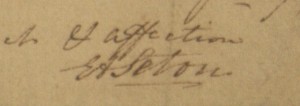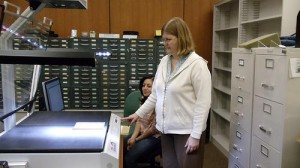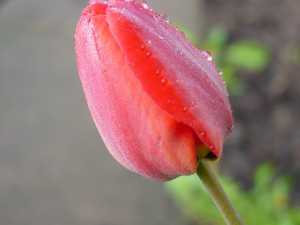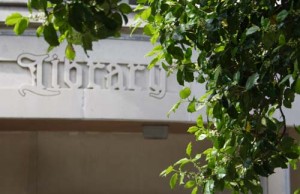Posted for Teri Ann Pirone:
Most of the blog entries in the Blue Electrode deal with one or two interesting items that have been digitized by our team. Today, however, I would like to reflect more generally on the digital library. The project has achieved tremendous growth since its inception in June 2006. It has seen numerous student workers come and go, as well as interns, and now, some of the professional colleagues who helped lay the foundations for this project are moving on from the library. Sadly I am part of that latter category. However, rather than focusing on what the digital library has lost I would like to spend a moment reflecting on what the digital library has gained.
Over the past two and a half years the digital library has seen the creation of: the software for both the back and front ends, a full fledged redesign of the front end, the inclusion of more than 4,000 items in some 118 collections, and we have branched out to include partner’s contributions. Much like an iceberg though, these are just what can be observed from the outside. Many projects are being worked on behind the scenes, some of which have been alluded to in previous blog entries and others which have not yet been disclosed, but that are equally exciting and will add a richness to the content on the digital library that has not yet been achieved.
One of these projects is the transcription efforts. I have personally had a large hand in developing the standards for this project and training an enthusiastic group of transcribers. With some luck, soon this project, which until now, has only been shared via the blog, should be publicly viewable, at least in part. The transcription project has a long way to go since the time it takes to transcribe and revise handwritten documents is far greater than the time it takes to scan and mount them online. Still, we have made a solid start on this project which I am sure will continue to bear fruit.
There are other gems that will be unveiled in the short term too, so keep an eye out for content from our newest partner and a handsomely designed and well-researched online exhibit for one of the items in the collection. As an outsider, perhaps, and I do hope this is the case, the effect may look effortless, but there have been numerous bumps in the road. Perhaps the most persistent problem we have encountered is running out of storage space. Twice now this has left us with our only option being scanning to external disk drives. If there is a silver lining to this quite frustrating situation, it is that when we do manage to start mounting content again online, as we have started to do again just this week, then we have months worth of scanned materials that are just waiting to be added to their digital collections –resulting in an explosion of new content.
How do you bid adieu to a project that you have seen the birth of and continue to work on from afar? This was the task set before me and I still don’t have any good answers. All I can say is that I am proud to have worked on a project that gives so much to the scholarly community. It enriches our historical record, builds bridges with other local institutions, and has a reach that goes as far as the World Wide Web. I hope in this blog entry I have piqued your interest about what might be coming and have given you a peak behind the scenes to better understand what it is like working on a project like this. I have watched the progress and development of this exciting program and it is with real sadness that I am leaving it, though I am grateful that I can check in and see the development of the project with the ease of opening a browser and pointing it to digital.library.villanova.edu
Teri Ann Pirone




